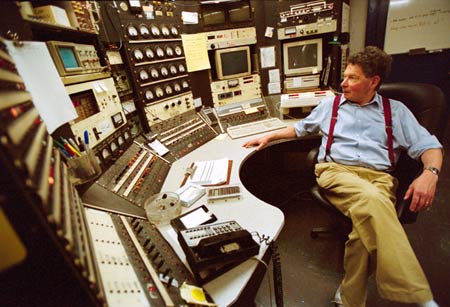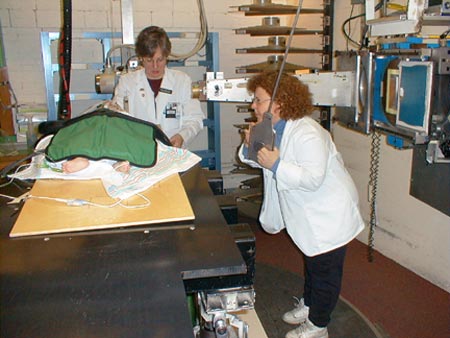An end to a distinguished career

On April 10, the Harvard Cyclotron Laboratory (HCL) treated its last patient.
The patient, a 2-month old baby, underwent radiotherapy for a rare hereditary eye tumor, a form of cancer called bilateral retinoblastoma.
For the past 30-plus years, HCL has run a highly successful clinical program for cancer patients. One of only 20 centers worldwide to specialize in proton-beam therapy – a form of therapy more precisely targeted than conventional radiation therapy – HCL has achieved distinction in the field.
HCL has treated more patients – 9,115, in all – than any other center, delivering 46,055 radiation oncology “fractions” (treatments), according to Bernard Gottschalk, senior research fellow at HCL. HCL staff also developed key techniques in proton-beam therapy. In the early 1970s, Andreas Koehler, acting director of HCL for 21 years, developed procedures for treating eye tumors, working with Ian Constable of the Massachusetts Eye and Ear Institute (MEEI). These techniques are now used world-wide, says Gottschalk.

One of the earliest proponents of proton-beam therapy was Robert R. Wilson, then professor of physics at Harvard and designer of Harvard’s Cyclotron. As early as 1946, Wilson noted that protons travel predictable distances in human tissue, depending on their energy, and they deposit most of their radiation where they stop. Beams of protons could be directed toward tumors and could spare adjacent tissue.
At the Harvard Cyclotron, electrons are stripped from hydrogen gas to produce free protons. A magnetic field keeps the protons moving in circles of wider and wider circumference. The protons gain speed and are shot in a beam toward the cancerous areas needing treatment. The beams are typically administered in a 200-microsecond burst every 5 milliseconds. The beam diameter can be adjusted anywhere from 3 millimeters to a maximum of 30 centimeters. In the machine shop near the treatment rooms, machinist Elliott Hammerman makes molds out of brass and Lucite, custom-shaped to each patient’s tumor. The plastic and brass confine the effects of the beam to the width and depth required.
The Harvard cyclotron was built in 1947, and it accelerated its first proton beam in 1949. Before 1961, when HCL treated its first cancer patient, the cyclotron was used almost exclusively for physics research. In the 60s, HCL also conducted space-related research, working with NASA to test the effects of radiation damage on what would become the first communications satellite to be launched into space. Since the 1970s, HCL has focused on biomedical applications, working closely with Massachusetts General Hospital (MGH), especially such colleagues as Herman Suit and physicist Michael Goitein.
“The staff here take great pride in the work we have done in collaboration with our colleagues at the MGH and MEEI,” says Miles Wagner, director of HCL. “On a personal basis, it is particularly rewarding to see a pediatric patient return, years older and healthy, for a follow-up visit.”
In 1995, ground was broken for a new proton radiation therapy facility at MGH, the Northeast Proton Therapy Center (NPTC). NPTC, which treated its first patient in November 2001, has the advantages of a higher beam energy to reach more sites in the body, a “proton gantry” that allows the beam to be aimed from any direction, and the physical resources to treat more patients than HCL. HCL has shared its equipment and staff to allow a smooth transition into the new treatment program.
After the baby’s final treatment on April 10, HCL staff and MGH “protoneers,” as one man called them, celebrated the Cyclotron’s distinguished career with a retirement party.
Richard Wilson, Mallinckrodt Professor of Physics and long-time supporter of the HCL, raised his glass in a toast.
“Let the next thirty years of proton therapy at MGH be even more successful than the last thirty years at HCL.”




